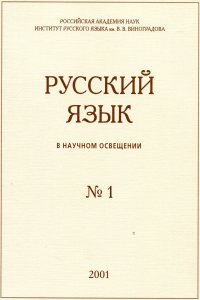The demonstrative pronoun sei in Russian official documents of the 16th–17th centuries
Abstract:
In the Ryazan, Moscow and South Russian business texts of the 16th–17th cent. the pronoun sei is widely used. In most cases, it performs a deictic function. Demonstrative groups with sei (a combination of the attributive pronoun sei and a noun) are mostly used to define the document as closest to the speaker or writer (spatial deixis) or the time of its composition (temporal deixis). Demonstrative groups are used in idioms with the nouns chislo, vrěmya, město (in the temporal sense), denoting the “current moment”, i.e. the moment the document was being composed, and also in the idiom otxodya sego světa, known in earlier testamentary letters of the 14th–15th cent. In those cases, the pronoun also performs a deictic function. There are scanty cases in which the pronoun can be interpreted as an anaphoric one. However, it seems that this function was not typical of the pronoun sei in business texts of the 16th–17th cent. and its use was rather invoked by some non-linguistic reasons. As compared to the 14th–15th cent., the use of the pronoun sei in the 16th–17th century business texts is limited. Apparently, by the 17th cent. sei as the basic pronoun of proximal deixis was replaced by the pronoun etot, though sei was still used in certain idioms, usually in the temporal sense, by the scribes as well as testators who put their signatures at the end of documents.


